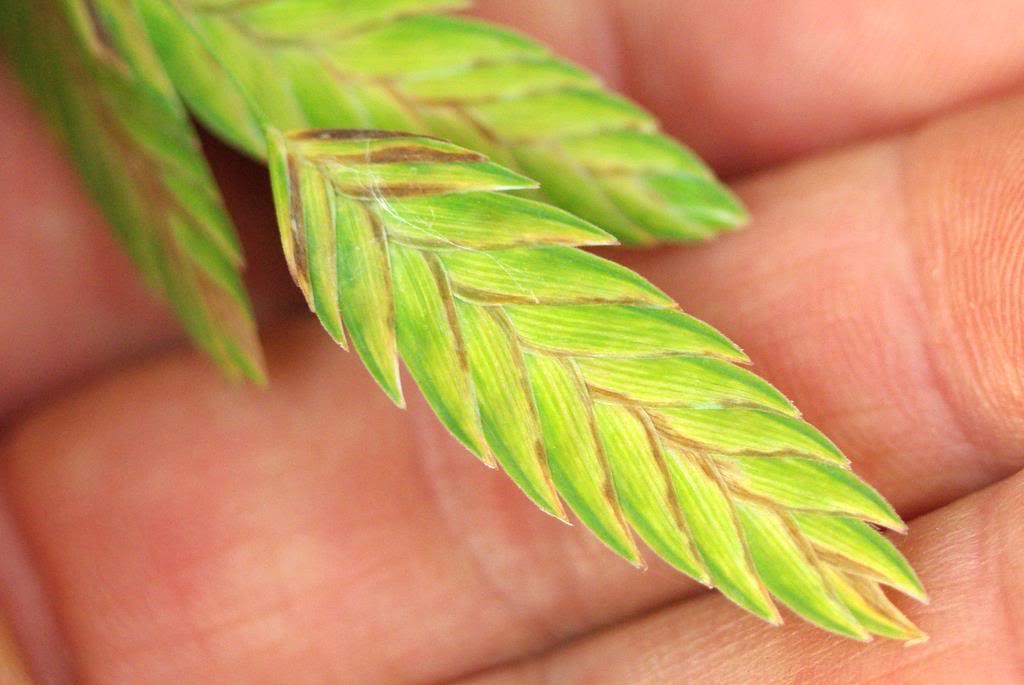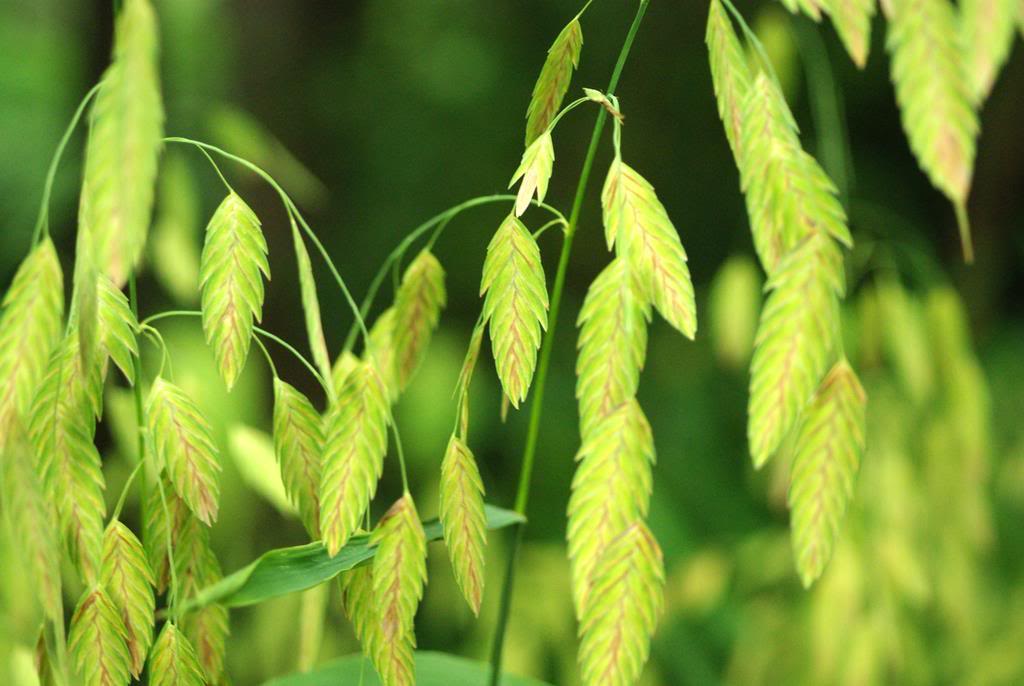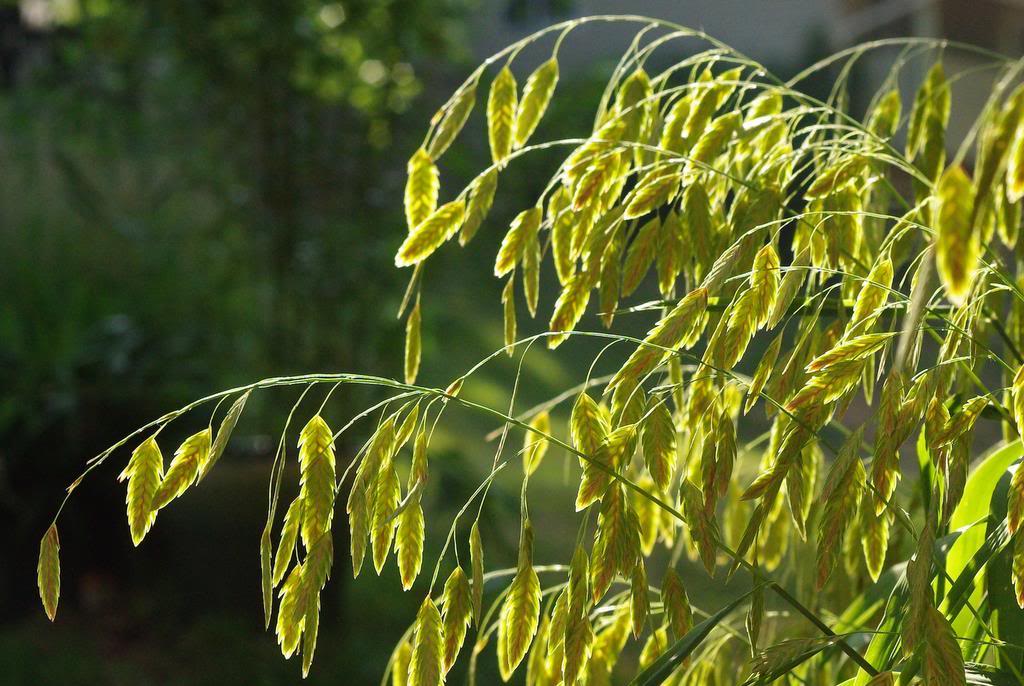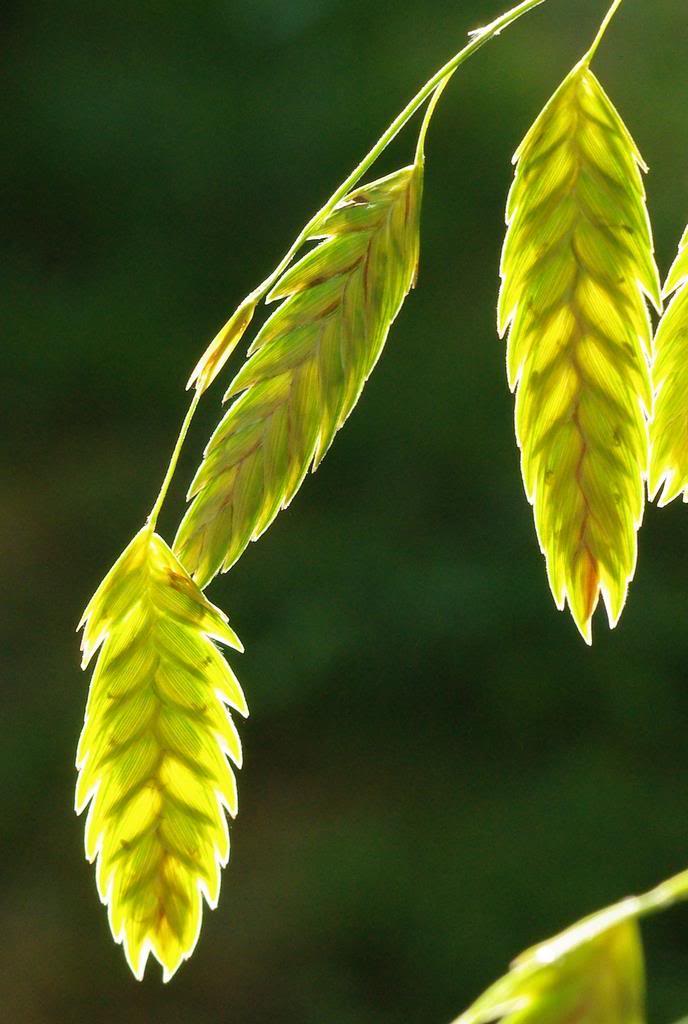There are few plants I love more than grasses. I like big ones like the large Miscanthus species, small ones like Mexican feather grass (these stay pretty small in my garden and climate), huge difficult to control ones like my running bamboos, and natives like little bluestem and prairie dropseed. I'll often let these grasses reseed, especially the natives, but sometimes you just have enough of a certain plant and new seedlings are no longer welcome.
Case in point the Chasmanthium latifolium, or "wood oats" (or whatever other name you call it). These plants have the most wonderful seed heads, but can quickly take over a planting bed, garden, or yard.
They reseed quite readily, and as I've posted before they're easy to pull until they reach a certain size -- then it becomes a lot more work.
So I'm always fighting to keep these seedlings from sprouting everywhere, and honestly I'm getting a bit tired of it.
I've got plenty else to do in the yard and around the house (which is why today's post is so short), so pulling dozens of these things every month is not on the to-do list.
Although I have a few plants right at the back edge of my yard on the border of the wooded strip of common ground, and a couple of strugglers under the front yard maple, I'm down to one main patch of this grass along my driveway. It's beautiful in the early evening when backlit by the setting sun:
I'm definitely going to remove several of the plants here, and may even remove every one of them. I haven't decided yet, but I'm leaning toward total removal.
So beautiful seeds or not, I think they'll all be moving back to the woods sometime soon.
.





It's hard decision to remove a plant you like, but I'm going through a similar thing with a large miscanthus. It seems like Chasmanthium latifolium is a pretty common plant in your area, so you can always get another one down the line.
ReplyDeleteWood oats or river oats can be a bit too enthusiastic, so I can understand you wanting to remove it. Gardens need editing sometimes. All the same, I love those seed heads and the fact that it will grow in dry shade.
ReplyDelete